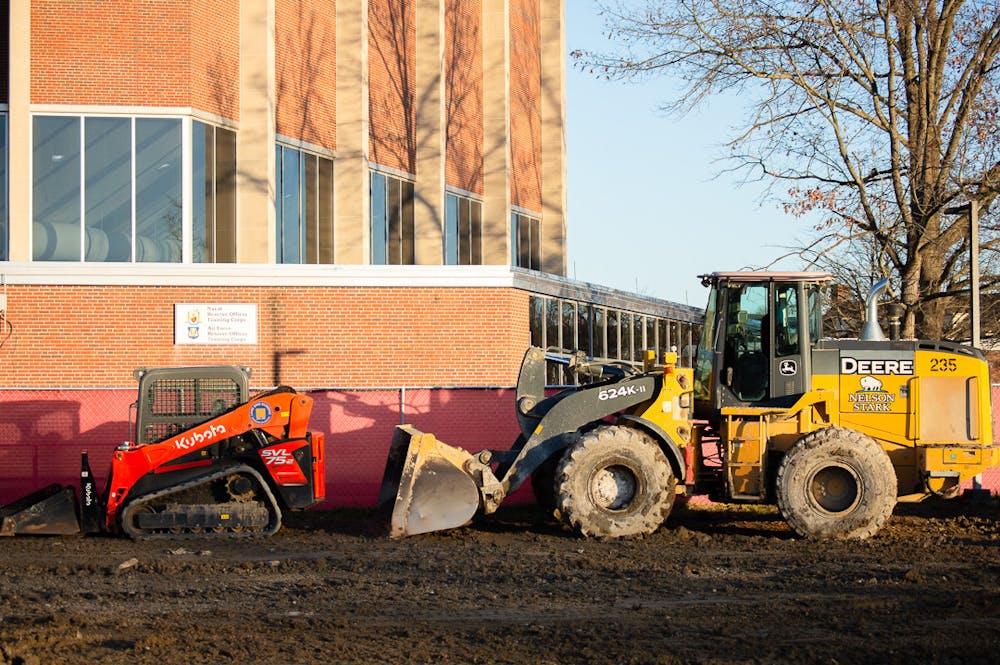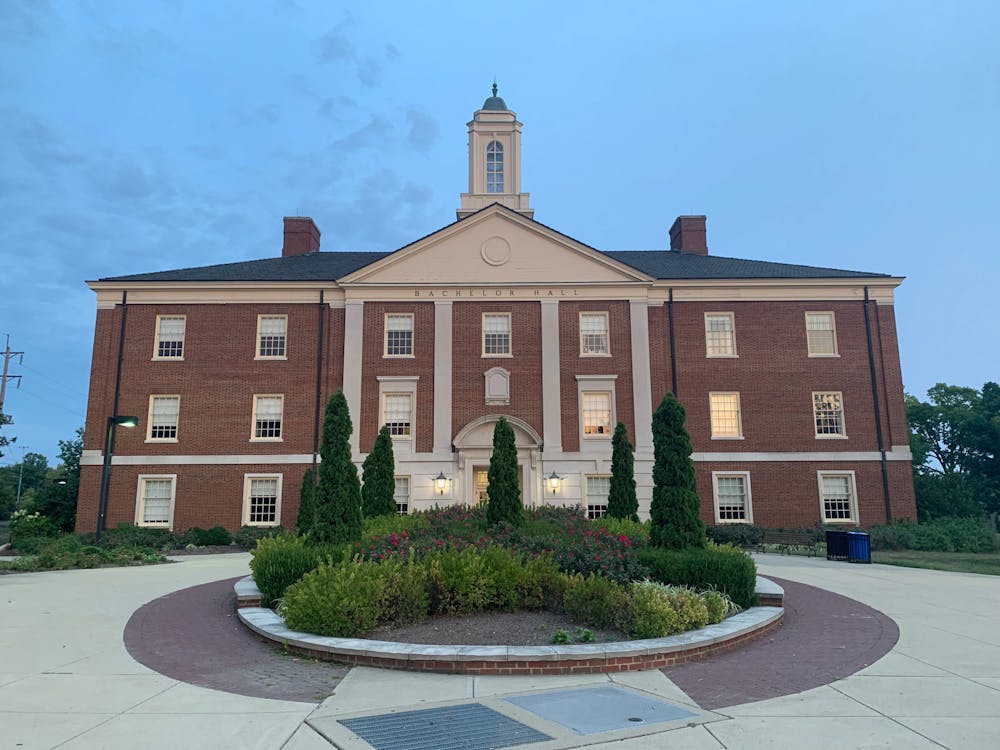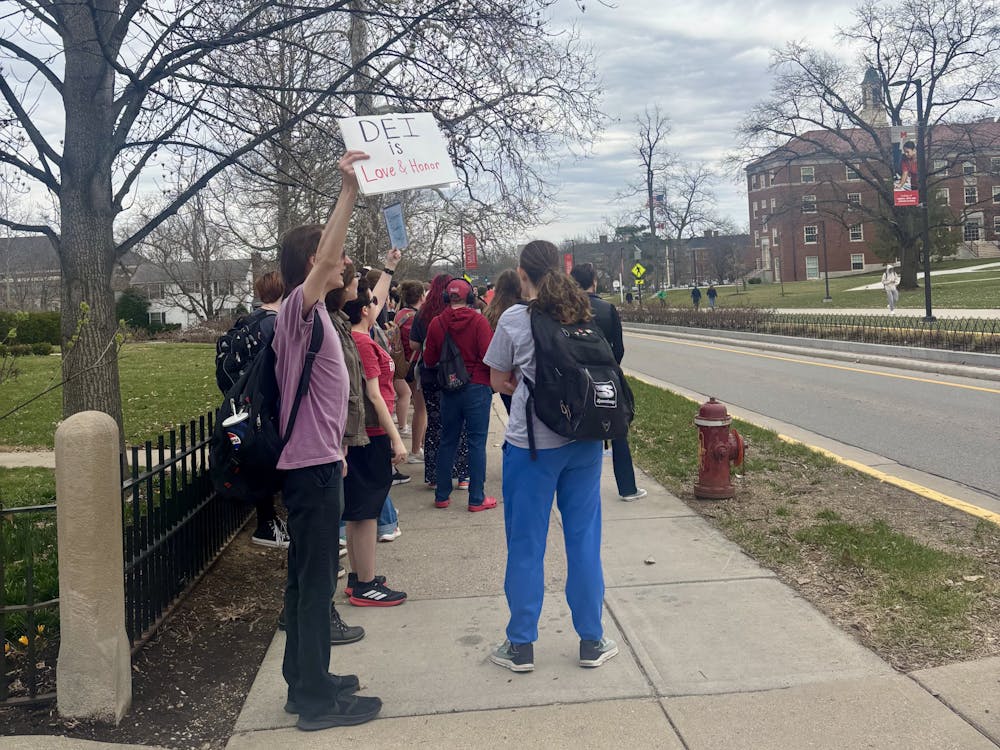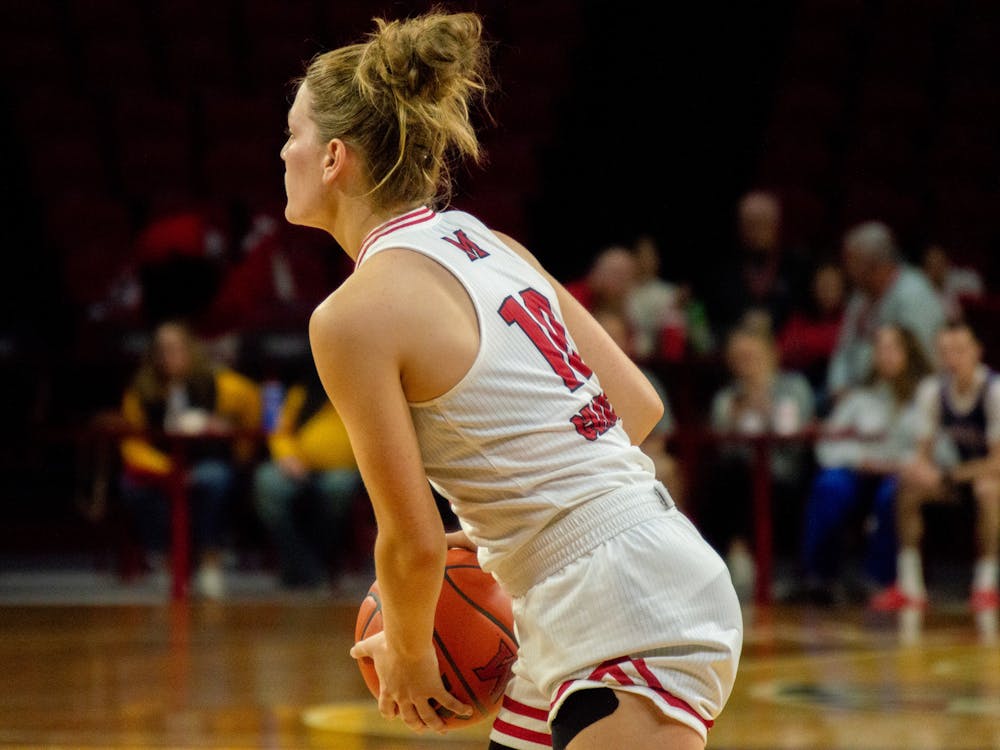For nearly 60 years, Millett Hall has served as the home for the Miami University RedHawks men’s and women’s basketball and volleyball teams.
Men’s basketball inaugurated Millett on Dec. 2, 1968, against the University of Kentucky Wildcats. The women’s basketball team played its first season in 1974, and volleyball moved from Withrow Hall in 1985.
In the near future, Miami might see these teams performing in a new location.
In October, Miami announced plans for significant campus additions. One project the university proposed is a $100 to $200 million sports arena to replace Millett.
Miami shared information on the other development, a potential hotel on Cook Field, to faculty earlier this year but the arena was confidential through the early planning process. University Senate and the Campus Planning Committee weren’t aware of the project until October.
Millett’s last renovations took place in 2014 with upgrades to lighting, seating and locker rooms. However, Miami estimates that more than $80 million in deferred maintenance is required for the 56-year-old arena.
The high cost of renovating Millett provides an opportunity for Miami’s administration. David Creamer, Miami’s senior vice president for finance, said the main goal with future projects is economic development.
“We have to think about what will economically grow the university,” Creamer said. “We’re at a place [where] future growth is going to be more difficult, and we have to be thinking differently. We can’t simply stand still.”
Attendance at Miami athletic events has decreased for nearly every team in recent years. Last season, men’s basketball averaged roughly 2,200 attendants at home games.
Adam Beissel, an associate professor of sport leadership and management, explained that one factor for falling attendance may be Millett’s location on campus.
“One of the number one reasons is that [Millett] is too far away,” Beissel said. “[Students] start Uptown, and they’re having a good time, and [games start] at 1 o’clock on Saturday, so they just decide to stay Uptown.”
Miami athletics see the arena most, but it reflects the portrayal of the university’s past sports. For Beissel, a large project like this would change not only the lives of coaches and athletes but all students.
Enjoy what you're reading?
Signup for our newsletter
“Image is part of what we sell,” Beissel said. “It’s how we attract students. It is part of the personalized education experience that we offer here at Miami, and part of that is student life … While we may not be [a] state flagship, certainly there is an element of ‘Keeping Up with the Joneses’ to be viable within the competitive landscape for attracting future students.”
For Creamer, a new basketball arena central on campus would provide greater opportunities for students to attend athletic events. The athletic facility closest to dorms, Goggin, shows the highest percentage of student fans throughout the season, averaging 60% capacity.
“There’s a thought of, ‘How do we get [the basketball arena] closer to students [and] would that increase student interest and participation in the project?’” Creamer said.
The arena is early in planning and development, but nine sites were chosen for consideration. However, much of the decision-making so far has been held within the administration rather than consulting outside groups.
One such group is the Campus Planning Committee, which represents the University Senate and assists with planning and maintaining the physical space on campus.
David Prytherch, a member of the Campus Planning Committee and a geography professor, said the role of the organization in projects like these is to ensure that affected members of the community are aware of new developments.
“Those of us who serve on the Campus Planning Committee think it plays an important role,” Prytherch said. “We understand the administration has its own goals and the need to move and make decisions, but for these big decisions, it’s really important to have some community stakeholder input.”
Community members were not able to give feedback on the project before recently. Information regarding the arena was not revealed until Miami’s statement in October. University Senate and the Campus Planning Committee weren’t aware of the project until the same month.
A primary reason for this confidentiality is that Miami was searching for donors to cover part of the cost. With a valuation of more than $100 million, Creamer said a portion of the funding would need to come from private donors.
“The reality is we had engaged with the committee previously on the hotel project,” Creamer said. “The arena project, that was more about the timing of when we felt that the major fundraising could have been done, and we would have a gift in place that would give us greater confidence that the project would move ahead.”
The Campus Planning Committee was made aware of the arena plans in early October. For Prytherch, the proposed sites didn’t line up with Miami’s goals for the campus’ protected spaces.
The last master campus plan, created in 2008, stated that Slant Walk is a protected green space, meaning no construction can take place on it.
“We were concerned that for [the committee] to do its job, it needs to have a role,” Prytherch said. “We need to be a part of the process. This proposal, [with] what we currently know about the basketball arena, does not accord with the existing plans.”
Other organizations are concerned about the lack of a process during the plan. Cathy Wagner, an English professor and member of FAM and University Senate, said her concern with the arena project is that the university isn’t consulting arguably the biggest stakeholder: students.
“Decisions are being made in ways that make us not feel like the academic mission is number one in the minds of leadership,” Wagner said. “I think a lot of people are like, ‘What about the students?’ The whole university is a public university that is here for students. Why this process doesn’t start with students is a mystery to me.”
The financial burden of the arena is another area of concern for Wagner. After gift-giving, a significant portion of the final cost will be needed.
Wagner said she feels that spending as much money as the arena would need is irresponsible considering other departments and areas of campus need attention.
“It is galling to become aware that at the same time, they’ve been refusing faculty and librarians cost of living raises for the last two years during union negotiations,” Wagner said, “they are secretly planning something that’s going to cost the university a huge amount of money.”
Many factors are involved in the process, but a major question has been what to do with Millett.
Outside of hosting athletic events, the arena has held graduation ceremonies, commencements, concerts and other events.
However, with the high cost of renovating, the plan leans toward demolishing Millett while constructing the new arena. Creamer said there isn’t a realistic way to keep Millett up while building a new arena.
“It’s very costly to maintain, and because of its age, there are significant investments that would have to be made to be able to maintain the facility,” Creamer said. “Financially, there’s almost no way to do this that wouldn’t result in the removal of Millett.”
Multiple groups on campus have differing opinions on the project. Prytherch and Wagner both agree that a new arena would increase economic development, but the lack of process and consultation of stakeholders will prompt more negative reactions.
“I think two things can be true at once,” Beissel said. “I think there is a desperate need for our campus to have a better facility that can accommodate sporting events, lecture series, theater events and public gatherings. [But], when it comes down to it, is it worth it and will it pay for itself? That’s a tricky proposition.”




